Giada D300 Universal Barebone Mini-PC Review
Benchmarks and Performance
Before jumping into a few benchmarks, let’s take a quick look at the specifics of the D310 as reported by CPU-Z.
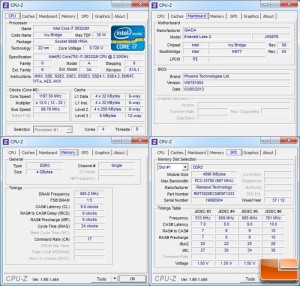
All testing was done with a fresh install of Windows 7 Ultimate 64-bit. No additional software was running during the benchmarking process.
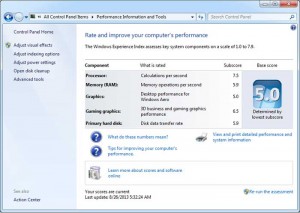
Microsoft has developed a generic rating system, called the Windows Experience Index. While it’s nice this is available, it has built-in caps depending on your hardware. With that in mind, it does give a quick view of what the hardware is capable of. The lowest score was 5.0 which happened to be the Graphics score. Overall, the scores the D300 received for the Windows Experience Index are pretty standard for a business class machine with similar specifications.
Crystal Disk Mark 3.0.2 x64
CrysalDiskMark is a benchmark for drives and does a quick measurement of sequential read and write tests, in addition to a random read and write test with in 512k and 4k increments. Finally, it will also do a 4k read and write test at a queue depth of 32.
32GB Sandisk U100 SDSA5DK-032G SATA III SSD:
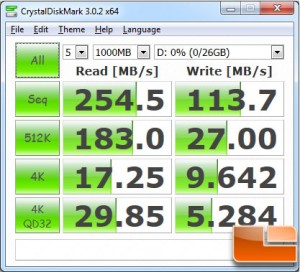
500GB Hitachi Tracelstar Z5K500 SATA II Hard Drive:
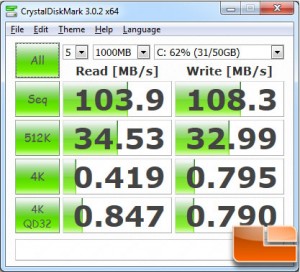
Benchmark Results: Pretty average results here for a SATA II hard drive and a small 32GB SSD that doesn’t have enough MLC NAND and lanes to need the SATA III bus speeds. The HM77 chipset is capable of SATA 3 speeds, so keep that in mind if you are wanting a faster storage drive, be sure to buy a proper drive! For a mini system where its not expected to be doing any high performance tasks, the speed of the drives should be fine for most users.
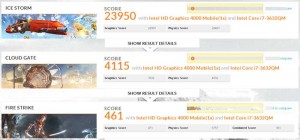
3D Mark 11 is one of the most popular gaming benchmarks; using the default settings the D300 was tested. The results show that it would support very basic gaming, with the Ice Storm score of 23,950; however for the more advanced gaming the Fire Strike score of 461 shows it doesn’t do very well for heavy gaming. Keep in mind that the D300 wasn’t designed for gaming, so these scores shouldn’t surprise anybody. With these scores, it put the system at 46%, which means that 46% of the systems in the 3D Mark 11 database scored lower than the D300.
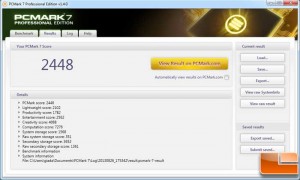
PC Mark 7 is another benchmark by Futuremark, it does a good job at providing an overall view of a system more from a business viewpoint rather than a gamers. The scores provided are pretty common for a business oriented system, especially one running the Intel i7-3632QM processor. The overall score received was 2,448.
| Power Usage | |
| Off | 2 – 3 Watts |
| Idle | 26 – 30 Watts |
| Load | 55 – 60 Watts |
Using a P3 Kill-A-Watt meter, the power usage of the D300 was monitored. While there was some fluctuation, the power usage above was the average range that was used during the test. For the idle test, the D300 sat at the desktop with no screen saver or other software running. The load test was done by running Futuremark 3D Mark 11 and took the reading during each of the tests.
